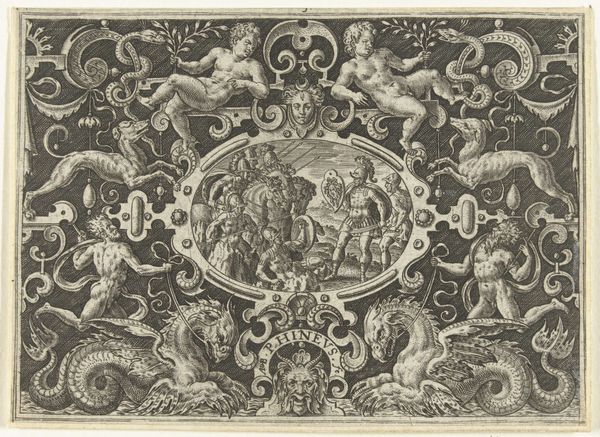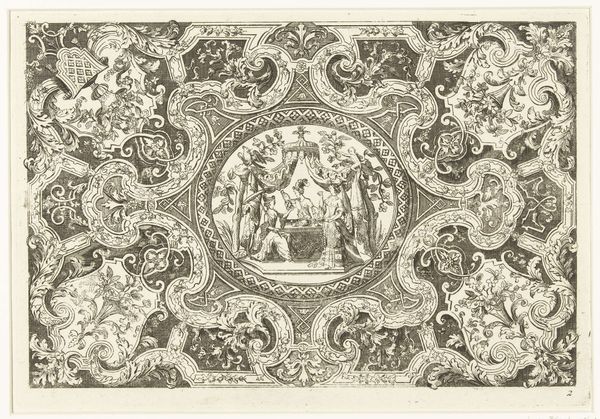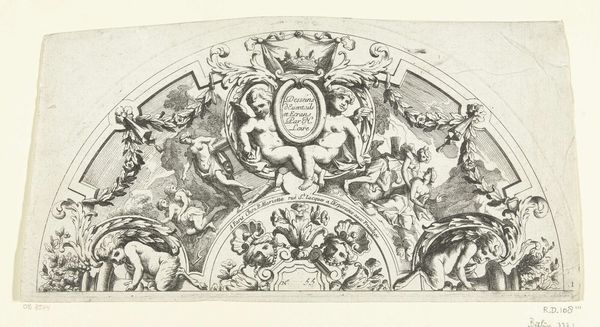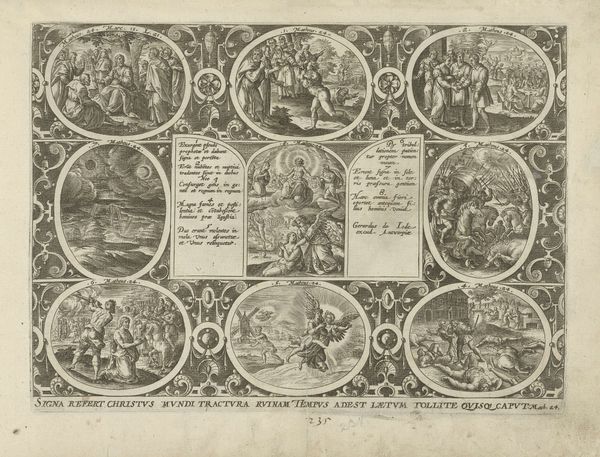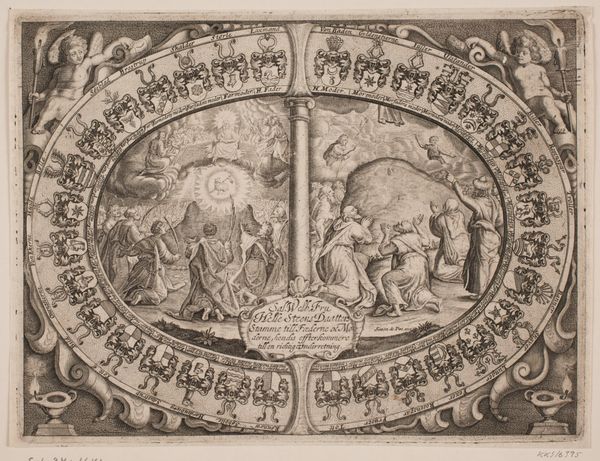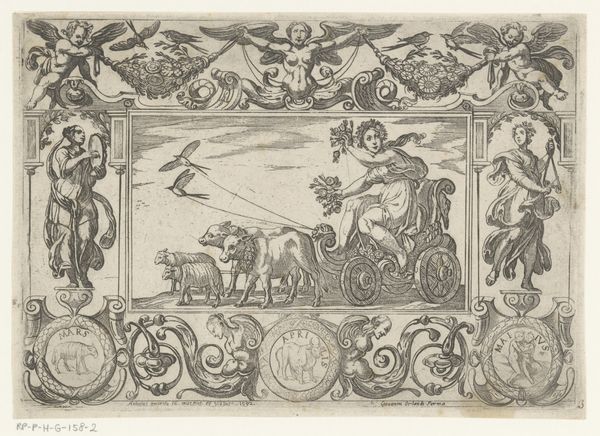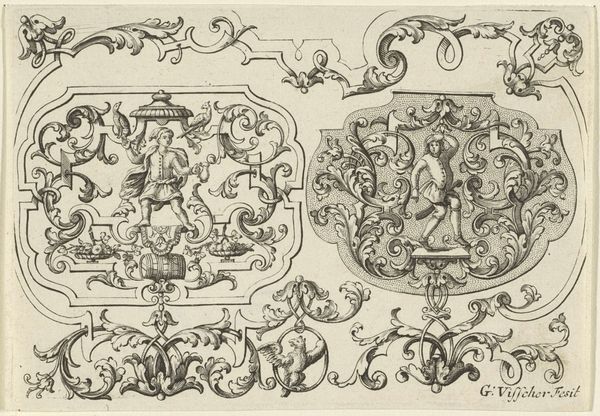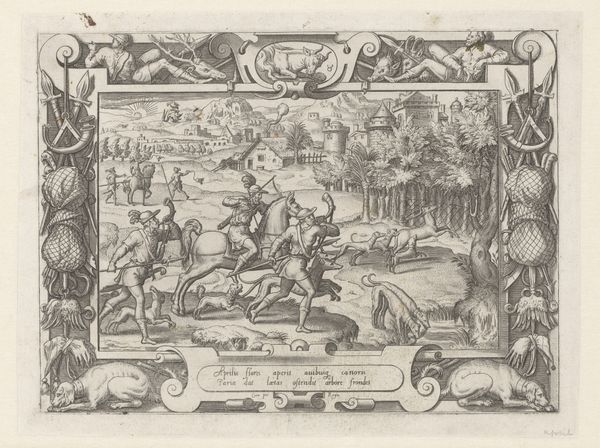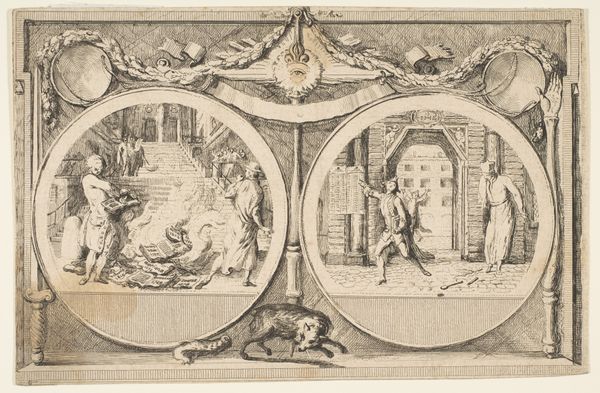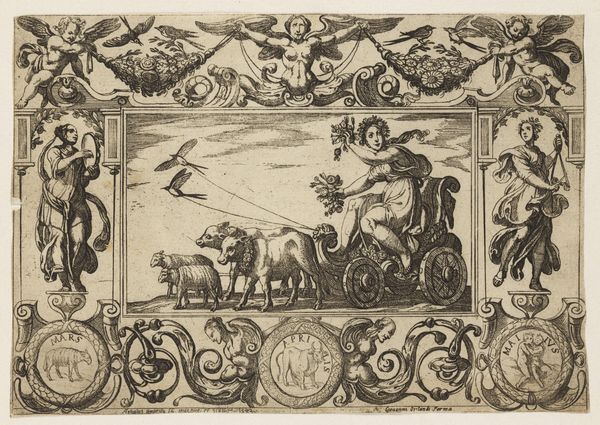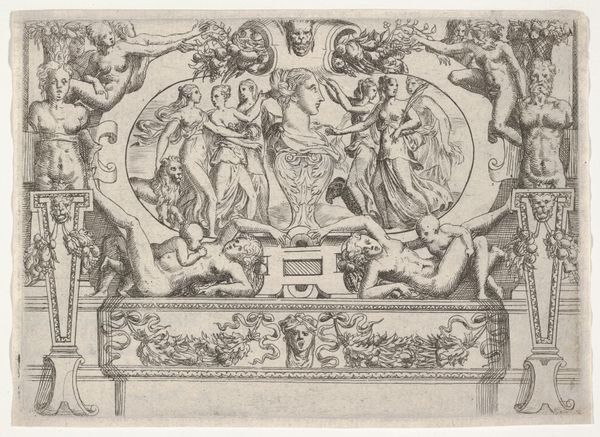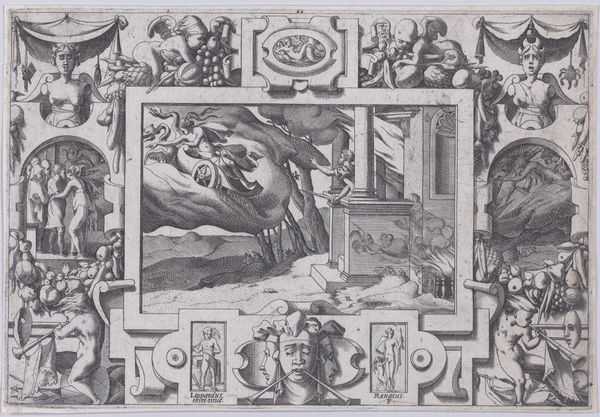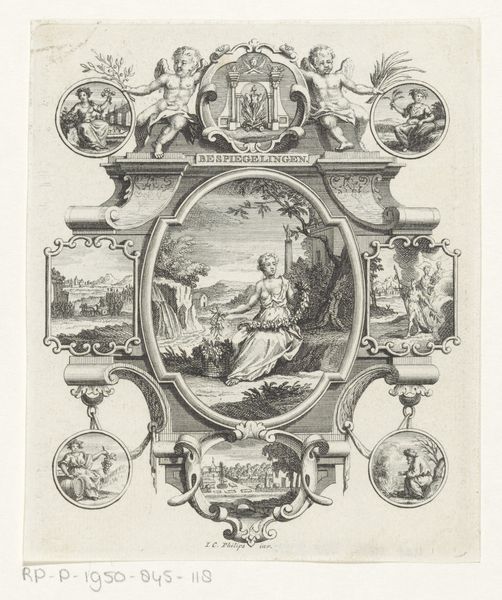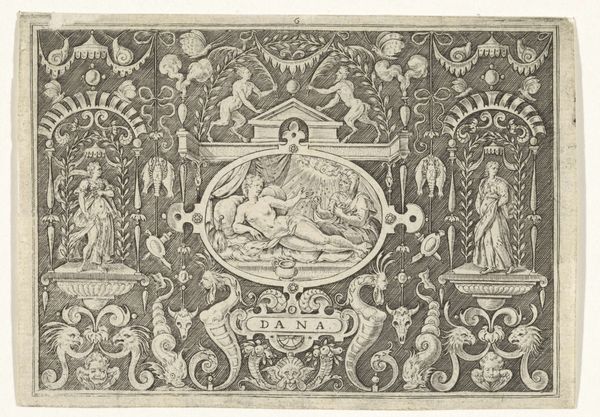
print, etching, engraving
#
allegory
#
narrative-art
# print
#
etching
#
mannerism
#
figuration
#
history-painting
#
engraving
Dimensions: 7 7/16 x 8 3/8 in. (18.89 x 21.27 cm) (image)
Copyright: Public Domain
Matthias Zündt created this engraving, *Allegory of the Effects of Wine*, during the vibrant and tumultuous period of the Reformation in Germany. The print visualizes how consuming wine can transform men into beasts. Zündt arranges circular scenes, each depicting the stages of drunkenness associated with different animals: the lion represents majesty, the ape symbolizes silliness, and the pig embodies gluttony. This resonates with the era’s moral and religious debates about human behavior and societal values. Wine, often associated with celebration and communion, is here portrayed as a corrupting influence, reducing individuals to caricatures of their worst impulses. Consider how Zündt uses the imagery of animals to tap into deep-seated cultural anxieties about the loss of control and the degradation of human dignity. The print doesn’t just depict drunkenness, it invites us to reflect on the tension between indulgence and self-restraint, a theme as relevant today as it was in the 16th century.
Comments
minneapolisinstituteofart almost 2 years ago
⋮
German ornament design grew more crowded after 1550, a trend attributed to Matthias Zündt. His book Kraterographie (1551) introduced goldsmith patterns so dense that few could be executed literally. This etching shows a similar tendency. Amid foliage and animals Zündt inserted scenes on the effects of wine--good and bad. At right are Christ at the Wedding at Cana, where he turned water into wine, and the Samaritan using wine to help cleanse a victim's wound. At left are Ham revealing the drunkenness of his father, Noah, and Lot being seduced by his devious daughters. In the middle scene, drink leads a peasant gathering into anarchy.
Join the conversation
Join millions of artists and users on Artera today and experience the ultimate creative platform.
